Tonga Flag Meaning
A red field with a white canton containing a red cross, representing the blood of Christ and the sacrifice of Jesus for mankind, the purity of Christian faith, and the deeply Christian identity of the Kingdom of Tonga as a Pacific island nation that was never colonized.
- Continent
- Oceania
- Adopted
- 1875
- Ratio
- 1:2
- Colors
- red, white
- Designer
- Unknown
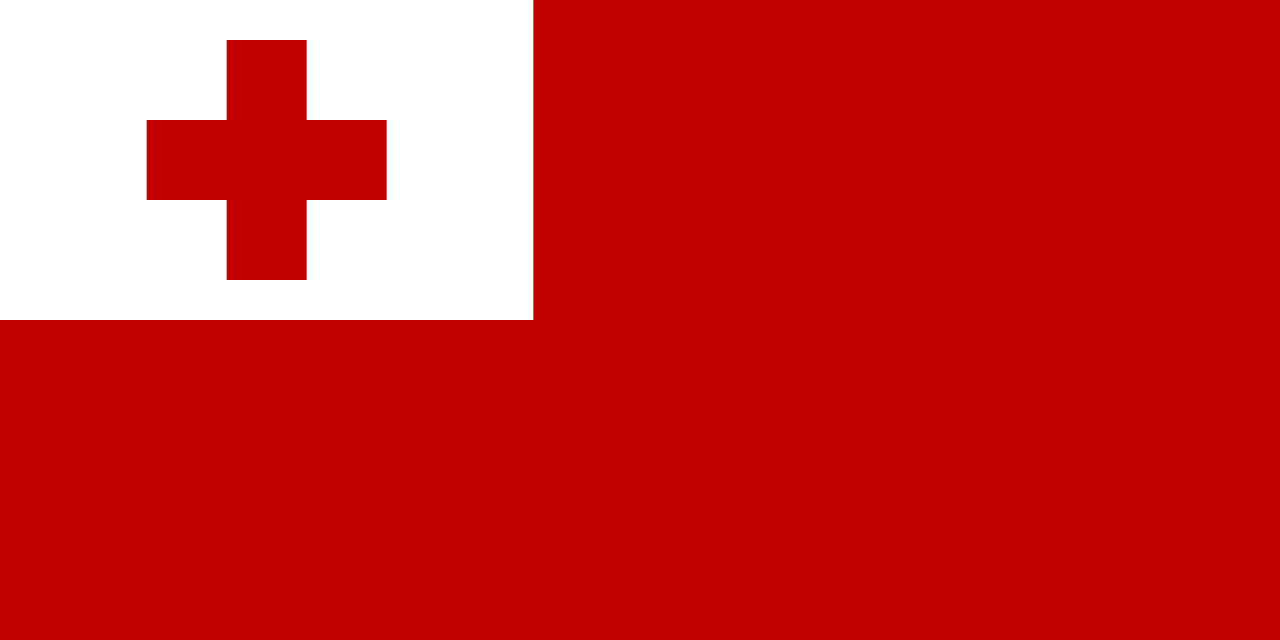
Symbolism
Red Field: Represents the blood of Christ shed for humanity, symbolizing the Christian faith that is central to Tongan identity and the sacrifice that underpins the spiritual foundation of the kingdom.
White Canton: Represents the purity and holiness of the Christian faith, symbolizing the clean hearts of the Tongan people and their devotion to Christian principles and values.
Red Cross: Represents Christianity and the cross of Jesus Christ, symbolizing the Methodist and other Christian denominations that form the spiritual core of Tongan society and culture.
Royal Authority: The flag represents the Kingdom of Tonga under the constitutional monarchy, symbolizing the sovereignty that Tonga maintained as the only Pacific island nation never to be fully colonized.
History
- Pre-European Era: Polynesian settlers arrived around 3,000 years ago, developing the sophisticated Tongan maritime empire that extended influence across much of the central Pacific through trade and conquest.
- 950-1200 AD: The Tu'i Tonga Empire reached its peak, controlling trade routes and tribute from islands across Polynesia, establishing Tonga as a major Pacific power with advanced navigation and social systems.
- 1616: Dutch explorers Willem Schouten and Jacob Le Maire became the first Europeans to sight Tonga, though sustained contact would not occur for over 150 years.
- 1773-1777: Captain James Cook visited Tonga three times, naming them the 'Friendly Islands' due to the warm reception, beginning regular European contact with the kingdom.
- 1820s-1840s: Christian missionaries arrived and converted much of the population, while civil wars between rival claimants to traditional authority disrupted the established social order.
- 1845: Tāufa'āhau was baptized as King George Tupou I, unifying Tonga under Christian rule and beginning the modern Tongan monarchy that continues today.
- November 4, 1875: King George Tupou I promulgated Tonga's constitution and adopted the current flag, establishing constitutional monarchy and formal legal structures while maintaining Tongan sovereignty.
- 1900-1970: Tonga became a British protectorate while maintaining internal self-government, allowing the kingdom to preserve its monarchy and traditional culture during the colonial period.
- June 4, 1970: Tonga regained full independence from Britain, becoming a sovereign nation while maintaining the constitutional monarchy and traditional governance structures.
- 2006: Pro-democracy riots in Nuku'alofa reflected growing demands for political reform and reduced royal power, leading to gradual democratization of the political system.
- 2010: Constitutional reforms reduced the monarch's power and increased elected representation in parliament, moving Tonga toward a more democratic form of constitutional monarchy.
- 2022-Present: King Tupou VI continues to reign over modern Tonga, which faces challenges from climate change, economic development needs, and balancing tradition with modernization.
Trivia
- Tonga is the only remaining kingdom in the Pacific and one of the few countries in the world that was never fully colonized by European powers, maintaining its independence throughout the colonial era.
- The flag represents a country that is extremely vulnerable to climate change and natural disasters, with rising sea levels threatening low-lying islands and frequent cyclones causing damage.
- Tonga is located just west of the International Date Line, making it one of the first countries in the world to celebrate each new day and new year.
- The kingdom consists of 169 islands spread over 700,000 square kilometers of ocean, though only 36 islands are inhabited and the total land area is just 747 square kilometers.
- Tongan and English are the official languages, with Tongan being a Polynesian language closely related to Samoan and other Pacific languages, preserving ancient Polynesian heritage.
- The flag flies over a country where about 98% of the population is Christian, primarily Methodist, with the Free Wesleyan Church of Tonga being the largest denomination.
- Rugby union is the national sport and cultural passion, with Tonga producing world-class players who often represent other countries like New Zealand and Australia internationally.
- Traditional Tongan culture includes elaborate mat weaving (ta'ovala), kava ceremonies, and traditional dances that are central to social and religious celebrations.
- The Tongan economy is heavily dependent on remittances from the large diaspora, with more Tongans living overseas (particularly in New Zealand, Australia, and the USA) than in Tonga itself.
- Tonga has a unique system of traditional nobility alongside elected representatives, with hereditary nobles holding reserved seats in parliament under the constitutional system.
- Traditional foods include roasted pig, fish, root vegetables like taro and yam, and tropical fruits, often prepared in underground ovens called 'umu' for special occasions.
- The flag represents a country where traditional Polynesian navigation techniques are being revived, with skilled navigators using stars, currents, and wildlife to cross vast ocean distances.
- Tonga faces significant development challenges including limited natural resources, vulnerability to natural disasters, and the need to balance traditional culture with economic modernization.
- The kingdom has maintained strong cultural traditions including respect for elders, communal land ownership, and extended family obligations that define Tongan social relationships.
- Despite its small size and remote location, Tonga plays an active role in Pacific regional organizations and has been a strong advocate for climate action in international forums.
Related Countries
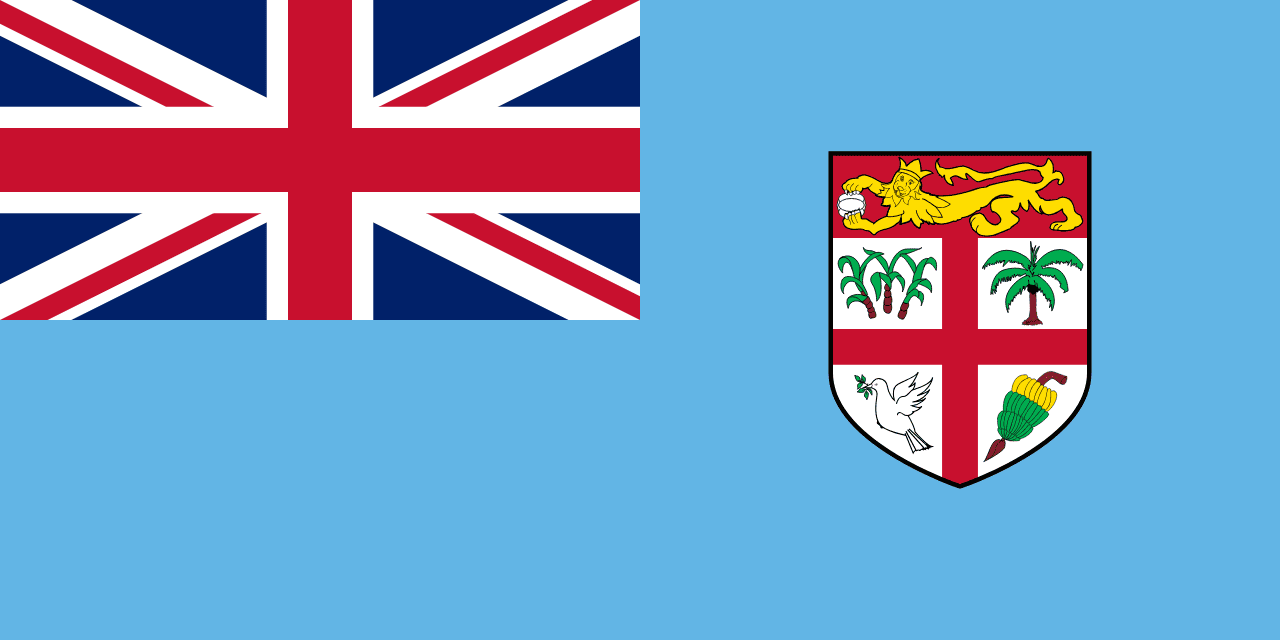
Fiji
Oceania
A light blue field with the Union Jack in the canton and Fiji's coat of arms on the fly side, representing the Pacific Ocean, British heritage, and the agricultural and maritime traditions of this island nation.
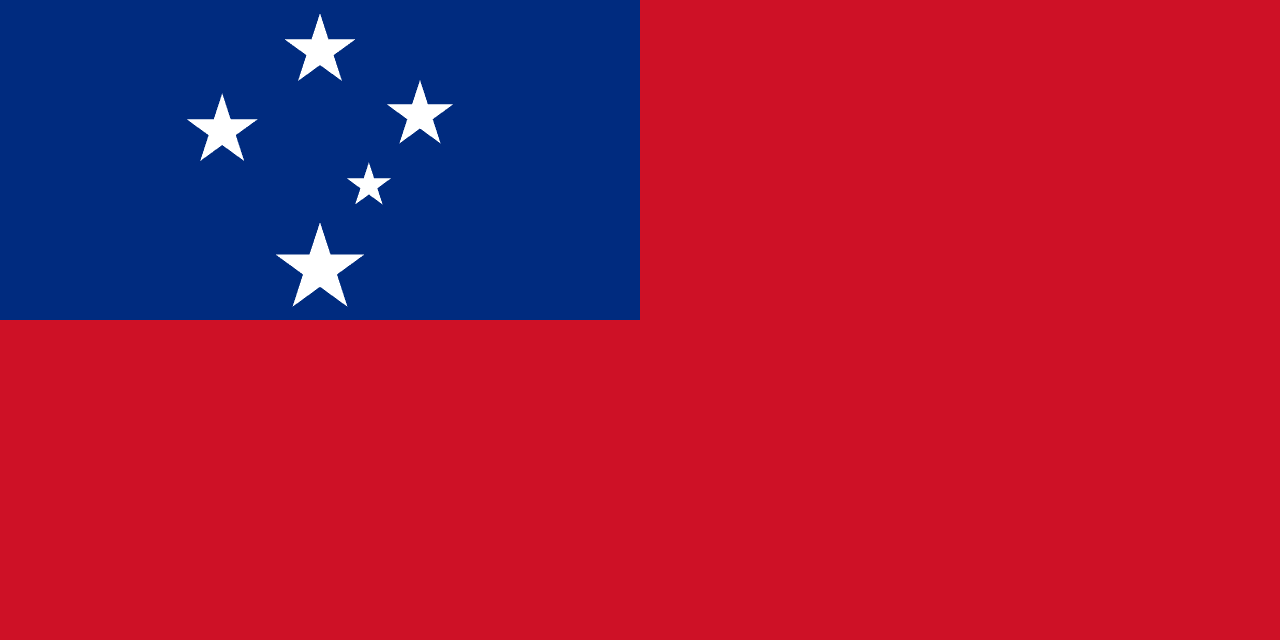
Samoa
Oceania
A red field with a blue rectangle in the upper hoist containing the Southern Cross constellation in white. The flag reflects Samoan heritage and its place in the South Pacific.
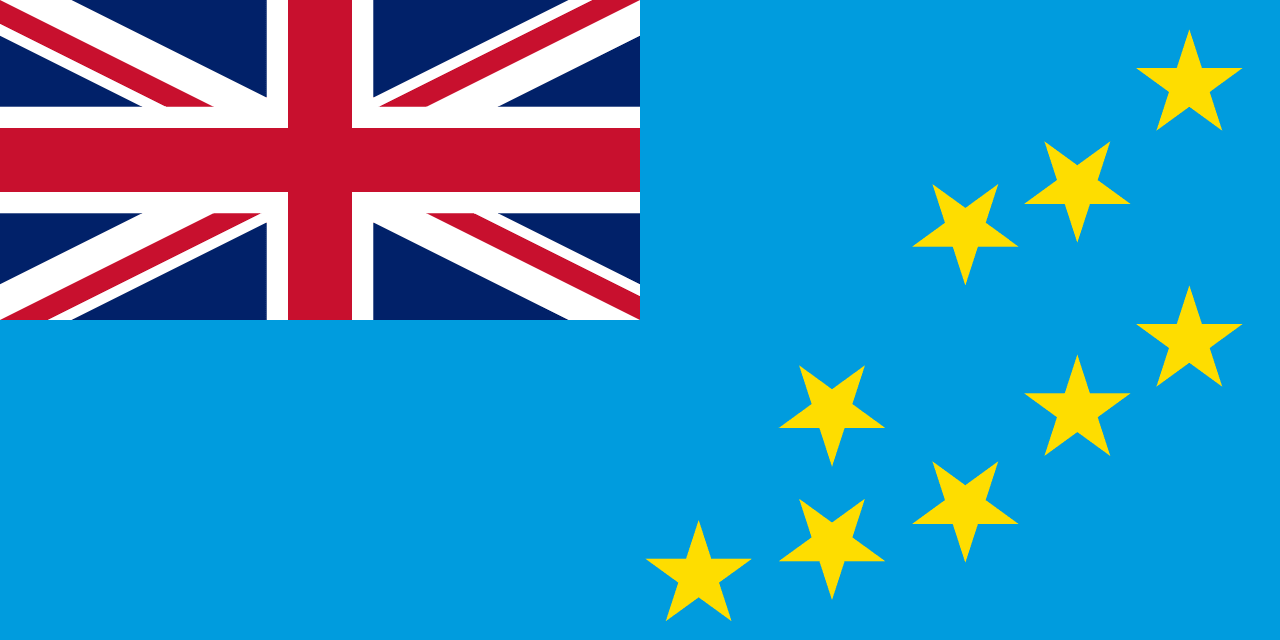
Tuvalu
Oceania
A light blue field with the Union Jack in the canton and nine yellow stars representing the nine atolls of Tuvalu, symbolizing the Pacific Ocean that surrounds the islands, the historical connection to Britain, and the geographical arrangement of the island nation in the central Pacific.
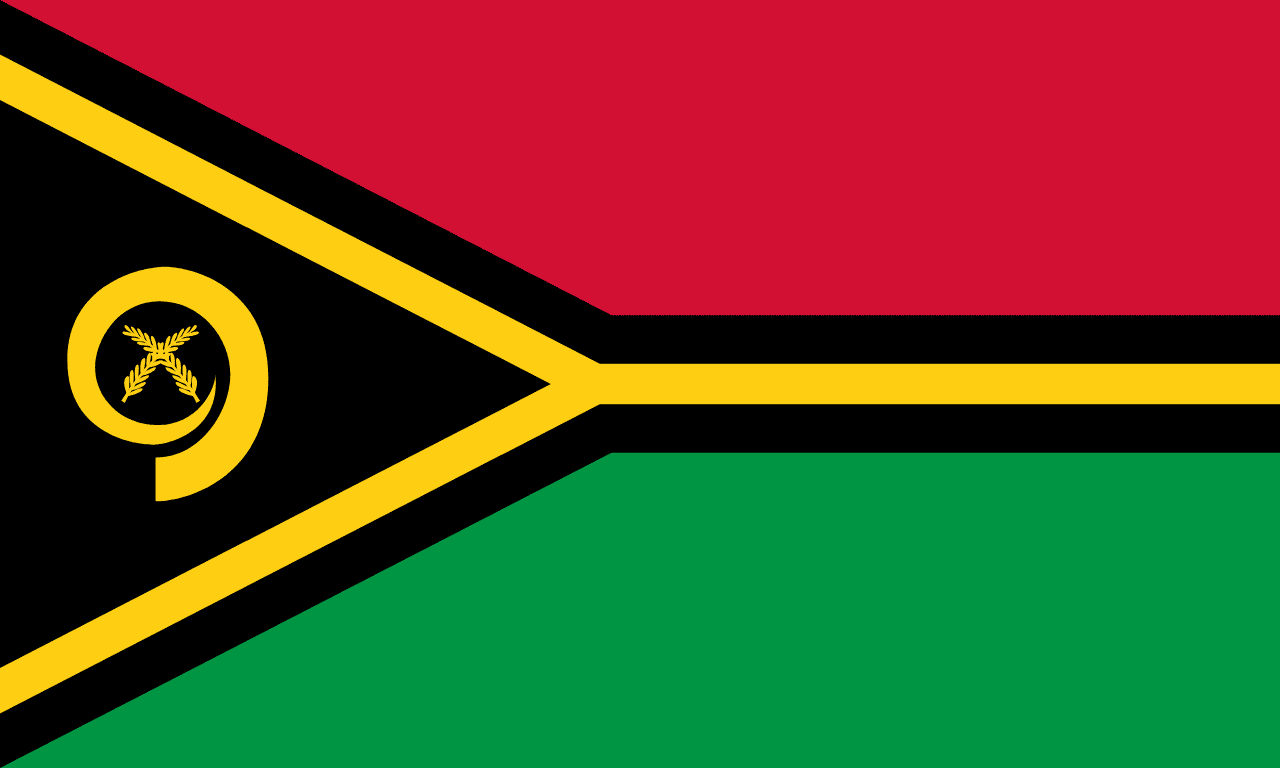
Vanuatu
Oceania
Red and green horizontal bands separated by a black stripe edged in yellow, with a yellow Y-shape extending from the hoist containing a boar's tusk and two crossed fern leaves, representing the blood of sacrifice, the rich soil, the Melanesian people, enlightenment, and traditional Melanesian values and culture.
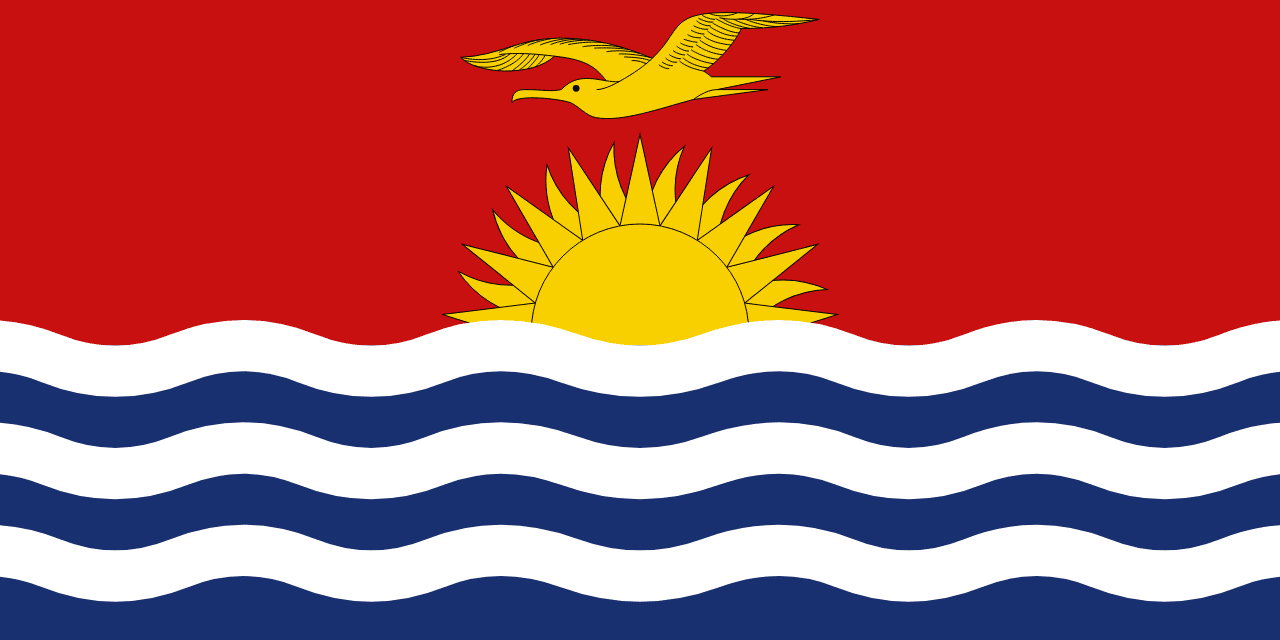
Kiribati
Oceania
A red upper field with a golden frigatebird flying over a rising sun above blue and white wavy stripes, representing the Pacific sunrise, ocean waves, and the unique geography of this coral atoll nation spread across the international dateline.
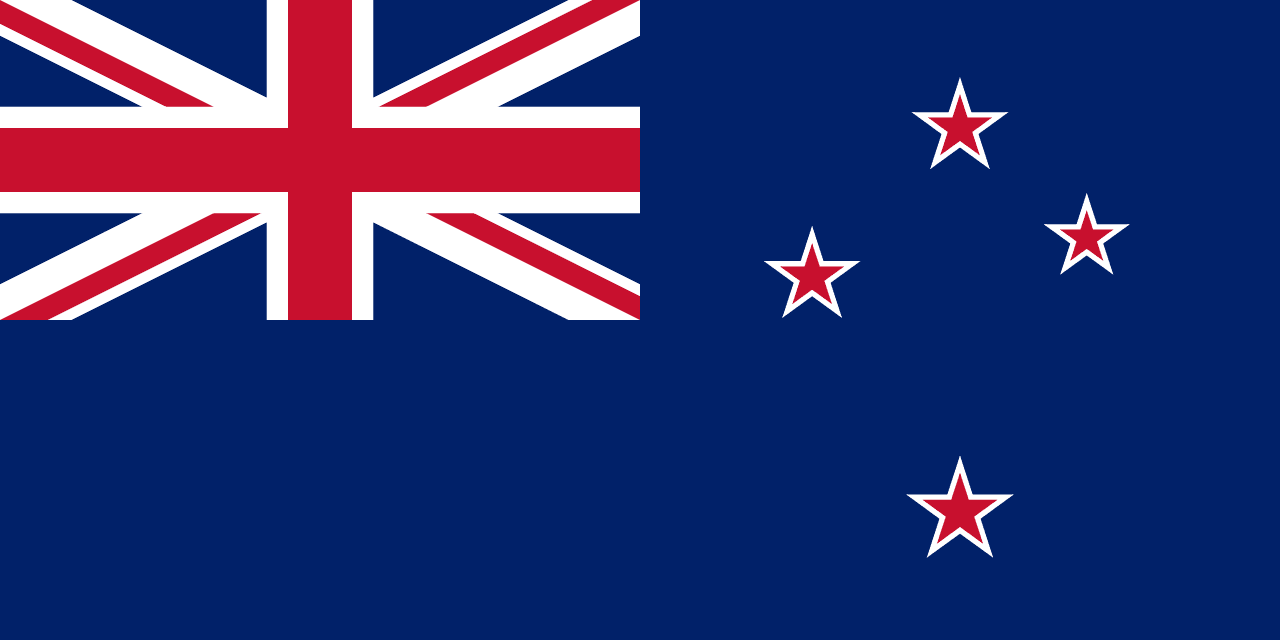
New Zealand
Oceania
A blue ensign with the Union Jack in the canton and four red five-pointed stars outlined in white representing the Southern Cross constellation, reflecting New Zealand's British heritage and Southern Hemisphere location.